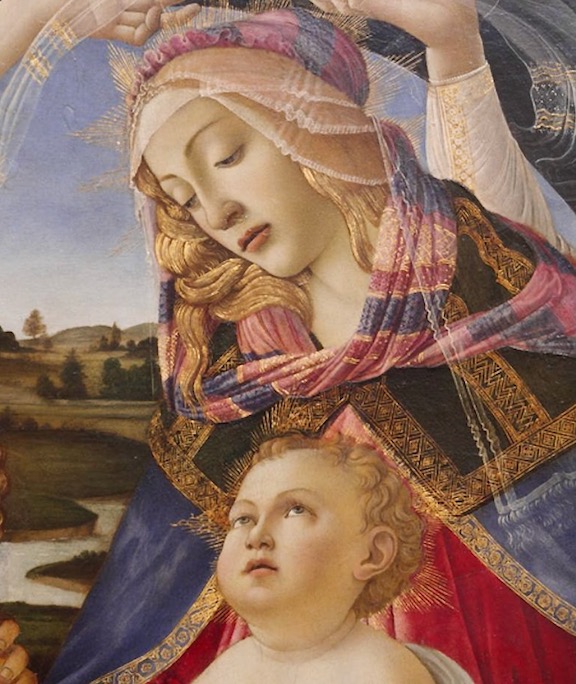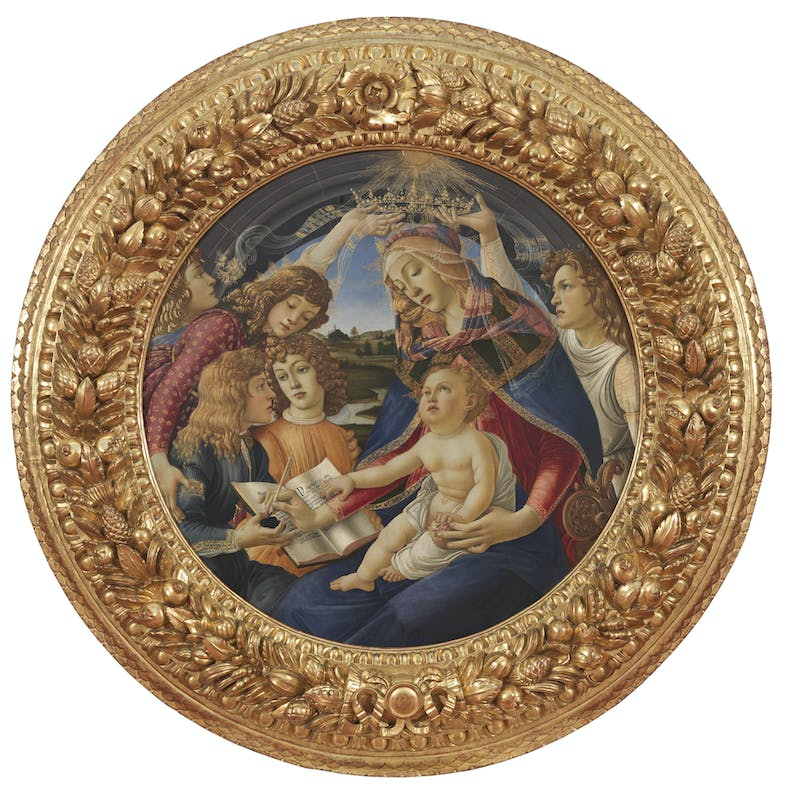At least the above has been suggested by some very great Christians – Dostoyevsky (or at least his Prince Myshkin in The Idiot), Solzhenitsyn, St. John Paul II, Benedict XVI, and (in various ways) countless others. As Christians, they knew, of course, that God has saved the world, in the strong sense. And only He could. So what could they possibly mean?
Well, it may have much to do with some particularities of modern times. In his Nobel Prize address, Solzhenitsyn raised that specific question on the basis of the “three transcendentals”:
[P]erhaps that ancient trinity of Truth, Goodness, and Beauty is not simply an empty, faded formula as we thought in the days of our self-confident, materialistic youth? If the tops of these three trees converge, as the scholars maintained, but the too blatant, too direct stems of Truth and Goodness are crushed, cut down, not allowed through – then perhaps the fantastic, unpredictable, unexpected stems of Beauty will push through and soar TO THAT VERY SAME PLACE, and in so doing will fulfil the work of all three?
That’s a very hopeful way to look at things today. We know that Truth and Goodness are as confused now as they have ever been. And that while the slow process of reason recovers them both, some way around the impasse has to be found in the meantime. And yet, beauty (small “b”) is also often deceptive and seems more likely to wreck the world, absent faith and reason.
Can Beauty of another sort, a transcendent Beauty among the other transcendentals, actually save for us at least a bit of what made and continues to hold us and our entire civilization together?
St. Augustine famously wrote in Book X of Confessions, “Late have I loved Thee, Beauty so ancient and so new, late have I loved thee.” (Sero te amavi, pulchritudo tam antiqua et tam nova, sero te amavi! ) He meant, of course, the divine beauty and in the same passage even decries his attachment to ordinary kinds of beauty in the world: “these beauties kept me far enough from thee: even those, which unless they were in thee, should not be at all.”
Yet that greater Beauty does exist, and shines through in lesser beauties for those with eyes to see. Most of us need deep exposure to what that could mean – and no little instruction in distinguishing the one kind from the other. And while the efforts are still largely in their infancy, there are several initiatives underway that we can hope will bear great fruits.
San Francisco Archbishop Salvatore Cordileone was in the nation’s Capital this weekend to promote an already quite successful program: the Benedict XVI Institute for Sacred Music and Divine Worship. Most Catholics have heard of the good archbishop for his pastoral firmness in denying Communion to Nancy Pelosi and in wrestling with local Catholic schools in an effort to keep them authentically Catholic. And that public pastoring remains a strong necessity that he and a couple dozen other American bishops have shown themselves quite capable of fulfilling.

But Cordileone has his eyes on even bigger game. At a gathering this past Sunday evening, he spoke of the Catholic Mass as the foundation of our civilization and the three languages – Hebrew, Greek, Latin – as connecting us with the three great cultures that gave birth to and remain the only foundation for our whole civilization.
And because of that (as well as for the obvious reason that solid, beautiful liturgy also helps us towards the infinitely more important goal of saving our souls) that he created and supported the Benedict XVI Institute – the late pontiff being an enthusiast for beautiful church music.
I’ve written already (click here) about the Benedict XVI Institute’s “Mass of the Americas” (click here), a stunning composition by Frank LaRocca dedicated to the Immaculate Conception and Our Lady of Guadalupe.
People talk casually these days about multi-culturalism, by which they usually mean demoting our mainstream American and Christian culture, and elevating elements “from the peripheries” to center stage. The results are usually less than impressive.
By contrast, “Mass of the Americas” draws on the traditions of Western classical music, Spanish folk compositions, and indigenous peoples – even using an Ave Maria in Nahuatl, the very language Our Lady of Guadalupe spoke to St. Juan Diego, to great effect.
It’s now available in various formats and being played at churches all over the country and soon in Mexico. Similar Masses are in the works dedicated to the ill, the homeless, and in celebration of St. Junipero Serra.
And another interesting project now underway is a type of Oratorio for Ukraine, with lyrics written by TCT contributor James Matthew Wilson, one of the leaders of a new generation of American Catholic poets. His latest collection St. Thomas and the Forbidden Birds will be published later this year.
And James has been busy with another project of advancing authentic Catholic culture. He and Joshua Hren of Wiseblood Books have created a Master of Fine Arts in Creative Writing program, the only one of its kind, at the University of St. Thomas in Houston, which just graduated its first class.
We may not have any Dantes or Flannery O’Connors, Vivaldis or Poulencs from these efforts – in the short run. But we have these and other laborers in the vineyard very much exploring a path to authentic beauty not much in evidence in the world around us today.
So if you find yourself mired in distress over runaway Synodality, continuing revelations of abuse in the Church, bad music, bad liturgies, bad sermons, bad schools and colleges, be of good cheer. This too shall pass. And in the meantime, Beauty – the Catholic Beauty that even the great Augustine took so long to love – still exists and is coming to us all.
__________
















